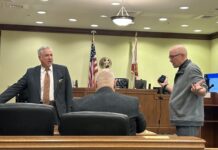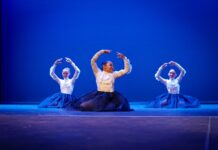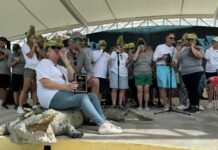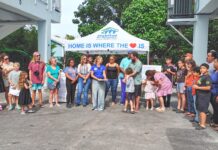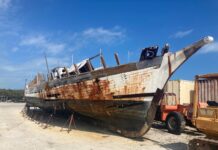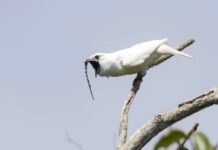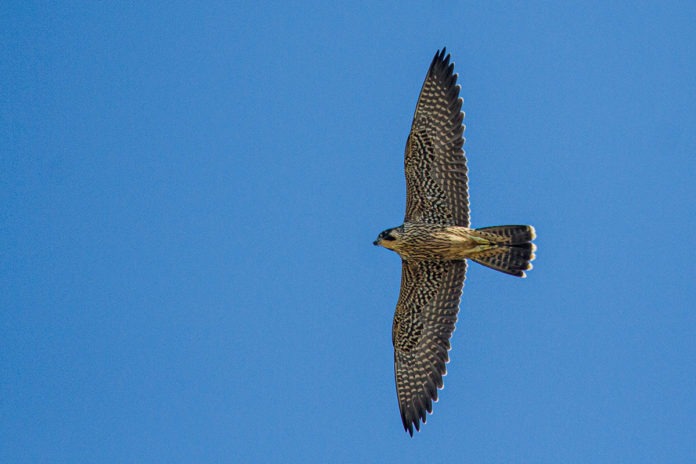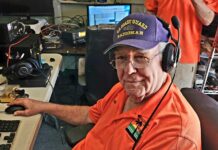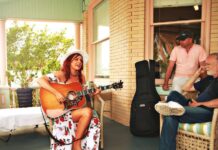Frank wanted ginger ale, and it was a good idea to give Frank a mixer with his bourbon, otherwise there was a chance he’d get too happy and start singing “The Pennsylvania Polka” again. (“It started in Scranton / It’s still number one / bup bup bup bup…”)
It is a terrible, terrible song, not something you want to hear in your own home, even on the back deck.
My wife was heading out to get the soda, but she’d done most of the organizing for the small, outdoor gathering we were having, so I said I’d go, if only to alleviate a little guilt.
So I was standing in the parking lot of the White Street Fausto’s, a.k.a. The People’s Fausto’s, the other evening, holding a six-pack of Canada Dry, when I saw my first peregrine falcon of the season.
I’ve been buried deep in a couple of big projects, so most of my birding of late has been incidental. Occasionally I will hear a weird noise, or see some motion in the periphery, and I’ll think, “Oh yeah, birds, I remember them. I should really make more of an effort to …” And then I’d get distracted by something else.
But that peregrine. It was maybe 50 feet up, in the last light of the day. I mean, the really good, golden-hued light, the kind photographers wait all day for, the kind you can’t quite fake in Photoshop yet.
The bird flapped a couple times, not the full-bore flap that will rocket them across the sky, but more of a wingtip flap that reminds you of the way a gondolier moves a boat up a canal, the way the effort doesn’t seem enough to earn the velocity.
I’ve seen a few thousand peregrines in my life. Possibly tens of thousands. But they always stop me in my tracks. Every. Damn. Time. They are eternally worthy of wonder.
At this point in my life, I can pretty much recite my “Wonders of the peregrine falcon in the Florida Keys” litany in my sleep: peregrine falcons are the fastest animals on the planet. Drop any other animal off the side of the Empire State Building and the peregrine falcon will fall out of the sky faster. (The peregrine will also be the one most likely to survive.) They can form their body into a near perfect teardrop shape, adjusting it as they fall. They have these structures in their nostrils called tubercles that function as baffles, basically keeping the air pressure from all that speed from over-stressing their lungs. They have been clocked in a stoop at 242 mph.
Peregrine falcons are found on every continent except Antarctica. In the 1970s in the United States, breeding peregrines were wiped out east of the Mississippi due to the use of organochloride chemicals, such as DDT, used as pesticides. It made the shells of their eggs fragile, causing them to collapse when the falcons brooded them in the nest. After DDT was outlawed, ornithologists, biologists, falconers and others came together to form groups like the Peregrine Fund to raise peregrines in captivity and re-release them into their old habitats across the U.S. It was a herculean effort, but one of the better environmental success stories.
In the 1980s, someone realized they were seeing a lot of peregrine falcons in the Florida Keys in the fall. (There’s a rumor that it was well-known serious birder and future Secretary of the Treasury Hank Paulson, but it’s an unconfirmed rumor. On the odd chance you’re reading a column about birds and wildlife in the pages of a weekly Florida Keys newspaper, Mr. Paulson…)
Sometime after that, a group of birders and ornithologists organized by the Audubon Tavernier Science Center in Tavernier (now called the Everglades Science Center) spread out in teams up and down the Keys to stare up into the sky and see if there was some kind of migration going on. This whole thing was considered something of a fool’s errand at the time, because it was a well known fact that hawks and falcons would not fly over large bodies of water, and why would birds migrate through the Florida Keys if they were unwilling to cross large bodies of water?
The counts showed that there were, in fact, a large number of hawks, falcons and other raptors migrating through the Keys. And also, that they were willing to fly over the water. And also that the best place to see the biggest numbers of these birds was Marathon. (The short version as to “why” is that, while they are willing to fly over water, it is riskier to do so, so they fly over land as long as possible. Once they reach Marathon, though, they tend to think, “eh, close enough,” and start crossing over to Cuba. A good number still make it as far south as Key West, though, before lighting out over the waves.)
Since 1998, there has been a seasonal hawk watch every fall at Curry Hammock State Park. (The counters will be there until at least mid-November this year. Stop by.) There have been several iterations, but the latest, and most long term, is the Florida Keys Hawkwatch, where they count every bird they can that flies past. It has created a large and invaluable data set about how many birds of which species migrate through, and when they do it.
One of the more mind-boggling facts that this project has shown is that the Florida Keys, specifically Marathon, is the peregrine falcon capital of the world. Year after year, more peregrine falcons are counted there than at any spot on the planet. They average about 2,500 every year, but it fluctuates. (In 2015 they counted 4,559, including 1,506 in a single day.)
Why every citizen of Marathon is not legally required to have a peregrine falcon tattoo somewhere on their body I do not understand.
That one I saw in the Fausto’s parking lot the other day was my first of the season, but they had counted 566 so far for the season at the hawk watch, 35 of them that day.
Still, that bird, in that light, was an unexpected reminder that such things exist whether you’re paying attention or not. It put a little spring in my step. It was possible I would even be willing to let Frank sing the “Pennsylvania Polka” again.


